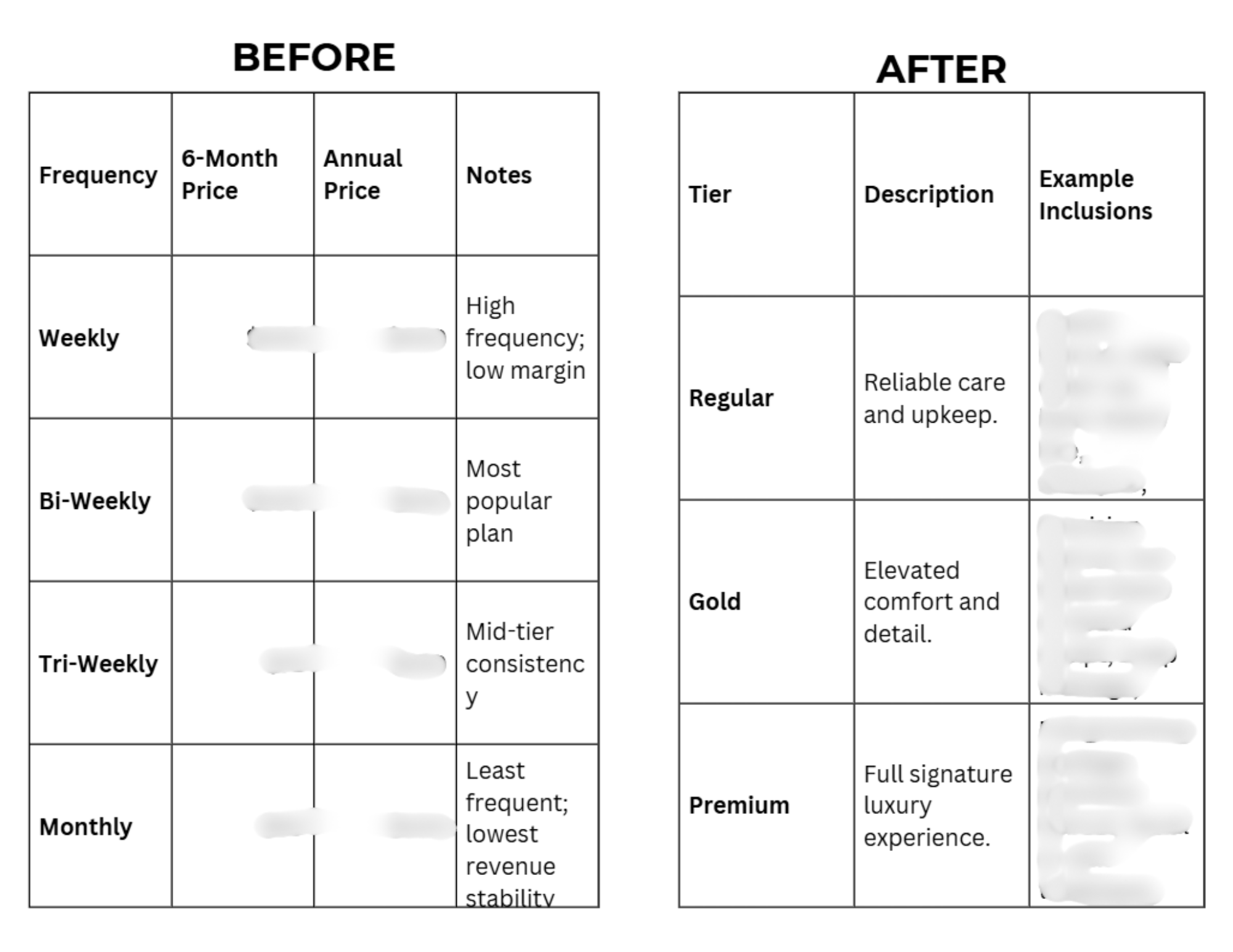Case Study - Pricing Alignment & Membership Strategy
1. Context
A growing service-based business reached out after five years of holding their prices steady while their service quality, client demand, and community footprint expanded significantly. Their customers loved them — but the pricing no longer reflected the value of the experience.
2. Challenge
The business owner knew a price shift was overdue but felt overwhelmed by the thought of rolling it out. The concern was maintaining trust, communicating clearly, and aligning pricing with the elevated experience clients already received.
There was also uncertainty about:
how to structure a new model
how to explain the change
how to reduce client pushback
how to roll it out without losing loyalty
3. What They Needed
They needed a pricing structure that felt:
fair
value-based
sustainable
community-aligned
and clear to clients
They needed a plan — not guesswork — and a partner who could organize everything into a structured, supportive rollout.
4. Solution / Approach
I began with a full discovery to understand their business model, client flow, service tiers, and the experience that clients valued most. From there, I created a strategic pricing alignment plan designed to give the owner confidence and clarity.
This included:
pricing models
tier-based memberships
client messaging
risk analysis
rollout timelines
supporting visuals
5. What I Delivered
This is where your package feels big and intentional:
Experience-Based Membership Model
Clear, value-driven tiers that reflect the level of service provided.Before → After Pricing Comparison
A visual transformation that helped the owner understand the shift.Risk Assessment & Mitigation Plan
What clients might misunderstand, and how to prevent confusion.4-Phase Rollout Timeline
What to do first, when to announce, and how to implement.Messaging Framework
Human-centered language for smooth communication.Implementation Toolkit
Structured visuals, templates, and talking points.
6. Outcomes
With these tools, the business owner gained the confidence and structure to make a change they had been avoiding for years. They moved into the rollout with clarity, transparency, and a plan that honored their clients and their craft.
They now have:
a sustainable pricing structure
a clear communication strategy
a confident rollout plan
a foundation to expand services and memberships
7. Why It Matters
This wasn’t just about prices.
It was about alignment, confidence, sustainability, and honoring the value of the work they deliver.
It allowed the owner to step into their leadership with more clarity and less fear.

